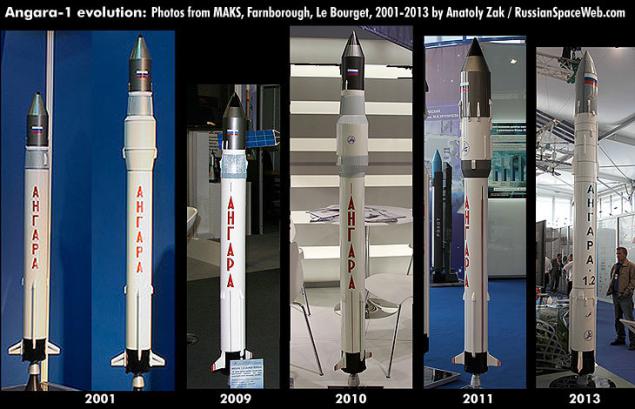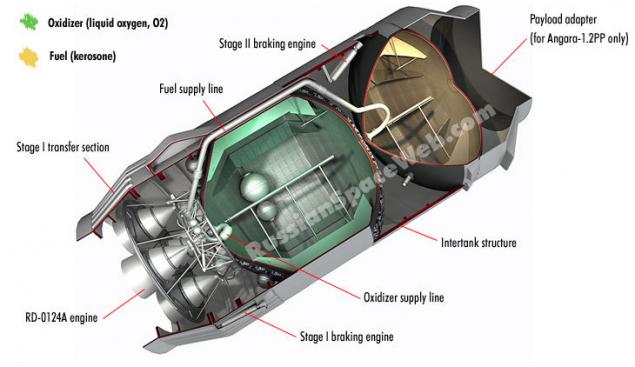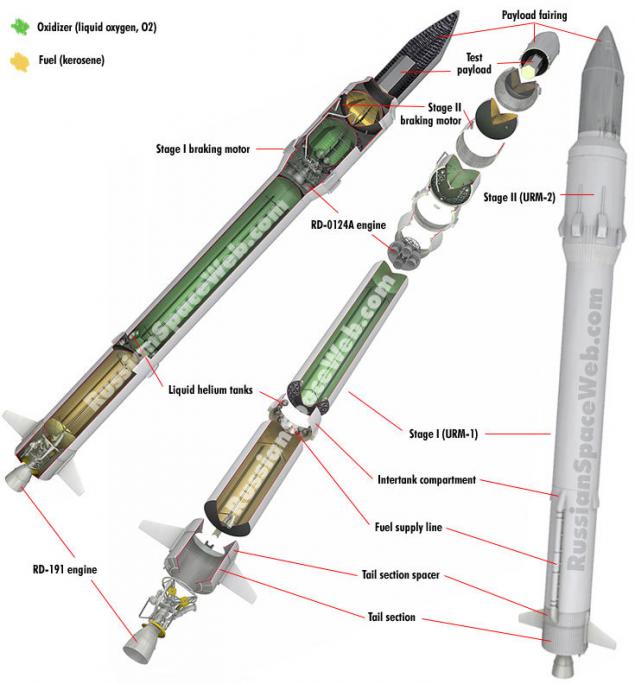What is wrong with the Angara-1.2pp
 Bashny.Net
Bashny.Net

July 9, 2014 happened, not afraid of the word, a landmark in the Russian space program sobtie, after 20 years of development began, finally, flight tests of the launcher "Angara". But not all of the event was hailed as a uniquely positive, "experts" immediately put forward numerous theories that the launch was a failure, and if it was successful, it flies only the first step, but it is not "count" - as the first step missiles "Angara" already made three flights as part of the Korean KSLV. In general, taxpayers again "let the dust from his eyes».
On what speculate that "something went wrong» TM sup>? Mainly indicated three reasons:
- First, somehow she was smoking a suspicious flight;
- Second, the rocket went right from the start and almost fell;
- Finally, the third and most important, the flight was suborbital.
Adding all three reasons together, especially considering that they are all true, we get the ugly picture failed program testing. And if the first two points are explained quite simply (evaporation air tank with liquid oxygen and maneuver leads away from the launch pad), the last point I would like more detail.
In the beginning was the letter, even two h4> In fact, everything is explained and easy and difficult at the same time, the whole point of these two letters PP, which stands for Full pi first flight. Let me explain, as the "Angara" - is a whole family of launch vehicles that would distinguish them, were introduced various indices, here they are:
- 1.1 Angara-carrying capacity of 1, 5 t
- Angara-1.2 - 3, 8t
- Angara-3 - 13T;
- Angara-5 - 25t.
- Hangar-7 (hypothetical) - 35t.
As we can see, no PP in line hangar there, so why it was invented, and why it was impossible to keep the Angara Angara-1.1 or 1.2? To start, you need to understand what different 1.1 and 1.2. As we know, all the family Angara rockets are assembled from universal blocks URM-1 (for the first stage) and URM-2 (for the second and third), and so at the Angara-1.1 Urman-2 is not at all. The role of the second stage performs her upper stage Breeze-KM. And since we know that the URM-1 successfully fly off all three times as part of the Korean KSLV , and Breeze-KM used in conjunction with the launch vehicle "rumble", then of course, to carry out such tests do not make sense. Construction Urman-1 is listed below (hereinafter illustration from the site Anatoly Zak )

But, as you may have guessed, there is URM-2 as part of the Angara-1.2, why not use it?
Not Universal Universal h4> During the development of URM-2 revealed that the second stage is too heavy for light Sheds and too light to heavy. So, step on the throat of universality, it was decided to make light of the Angara own modification Urman-2 with a reduced diameter with 3, 6 and 2, 9 m. The evolution of design ideas can be clearly seen in the photographs of models with exhibitions in different years.

On the image 2013 shows that the diameter of the first and second stages are equal, it is a Angar-1.2. But it is on the Angara-5 will still be used URM-2 diameter of 3, 6 meters. URM-2 design can be thoroughly studied in a three-dimensional model presented below.

That test URM-2 and was prepared special missile, called Angara-1.2pp, consisting of the first stage of the Angara-1.2 (URM-1) and the third stage of the Angara-5 (URM-2). Most of all, this is like a rocket modification Angara-1.2 in 2010.
Where booster, Zin? H4> This difference from the standard PP Angara does not end there. As the upper stages in the Angara-1.1 and 1.2 apply booster Briz-KM (without a display that can not be either in orbit, the upper stage works including the final ascent to the reference orbit), but it is not on the PP. This is due primarily to the fact that a test launch of the Angara was decided not to carry a payload, and replace it with the layout dimensions and weight. This decision was apparently due to the fact that in the Center. Khrunichev work not as opinionated people like Elon Musk, who in the first three launches Falcon-1 use the present satellites (by the way, all of these launches were unsuccessful).
Purely theoretically could be using Breeze withdraw layout into orbit, and then using it is to reduce it, but there is a paradox: Breeze will begin its work only if nominally fulfilled first and second stages, and if they worked, the tests already completed successfully, and if not, then there is nothing to work. So, there is no upper stage, the second stage of overweight ... there is only one option - a suborbital flight, we just have to choose a place.
I think no need to explain why the crash site for selected polygons on the Kamchatka Peninsula, not the Pacific Ocean or the territory of the "probable enemy" (in the first case, eat the press, the second potential enemy). Incidentally, due to lack of booster dimensions and mass layout is not separated from the second stage, as separating means located either in the booster unit or the payload, and either one or the other in the first start was not. Fully device Angara-1.2pp presented below.

Despite the insistent voices of critics of the project Angara test URM-1 and URM-2 were successful, and now everything is ready to start the heavy Angara-5 at the end of this year. We can only wish that these tests would have been as successful.
To post using information from:
site Anatoly Zak ;
site Tsikh ;
Forum "Space News» .
Source: habrahabr.ru/post/230083/
Tags
See also
What is the "Beatles" what is their success?
What is the tattoo ...
What is it runs on the field?
Guess - what is it? (4 photos)
You know what it's like to have a child with autism?
What are awarded medals?
And all that is characteristic of such white-fluffy ... and looking smart and beautiful! )))
Together on one moped 2000 km.Kazan-Anapa.Chast2
(16) what is extreme?
Unruly design. Skoda is.





















